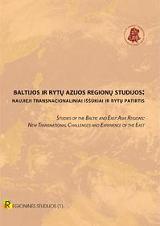Verbal Behaviour of Japanese Students in Conversational Lithuanian
Verbal Behaviour of Japanese Students in Conversational Lithuanian
Author(s): Laura ČubajevaitėSubject(s): Essay|Book Review |Scientific Life
Published by: Vytauto Didžiojo Universitetas
Keywords: behaviour; conversation; students; Japan; Lithuania; bendravimas; studentai; Japonija; Lietuva
Summary/Abstract: The paper discussed three communicative strategies that are most frequently used by Japanese students in conversational Lithuanian. These include code switching, repetitions and pausing. It has been noticed that the interviewed switch languages when it is necessary to fill in lexical gaps. As for the pedagogical perspective, Skiba claims that “when code switching is to compensate for a language difficulty it may be viewed as interference and when it is used as a socio-linguistic tool it should not” (Skiba, http:// iteslj.org/Articles/Skiba-CodeSwitching.html.) Repetitions are used in cases of the lack of linguistic competence and the students’ involvement in the conversation. According to Roebuck and Wagner, shadowing, which is one of the repetition forms, helps learners to participate in what has been said and in this way allows them to get involved more actively into the conversation (Roebuck and Wagner, 2004). This enables even novice learners to collaborate in the conversation and learn more at the same time (Roebuck and Wagner, 2004). Pauses help students to think and compensate the time deficit. Thus it is evident that even beginner level students are able to produce and collaborate in conversations with the help of the above-mentioned communicative strategies. As for foreign language learning, it could be concluded that these strategies are helpful and could be taught to be used consciously in the foreign language classroom to achieve more effective and easier learning. In addition, it might be beneficial to conduct further research in order to determine as to how students’ application of communicative strategies changes while improving the acquisition of foreign language skills.
Journal: Regioninės studijos
- Issue Year: 2006
- Issue No: 1
- Page Range: 190-199
- Page Count: 10
- Language: English

